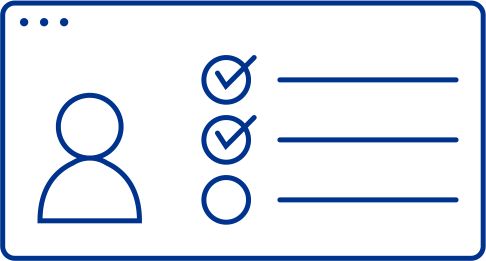After accelerating their digital transformation plans during the pandemic, Canadian business leaders are now focusing their efforts on new and emerging technologies. That means prioritizing application modernization and intelligent automation along with other Web3 technologies, according to the findings of 乐鱼(Leyu)体育官网鈥檚 latest Global Tech Report.
When 乐鱼(Leyu)体育官网 asked businesses to rank their top challenges in the adoption of new and emerging technologies, 鈥渟ub-optimal data and data management鈥� was amongst the top three. While global respondents said they鈥檙e laying the foundation for emerging technologies鈥攚ith nearly half making plans for the future鈥擟anadian respondents are taking a wait-and-see approach.
Strong data is the foundation of any digital transformation effort, whether it鈥檚 to leverage emerging technologies or to gain a competitive edge with your customers. Without a strong foundation, the rest of the house is going to be shaky.
How to build a strong data foundation
No matter what the business goal鈥攚hether digital transformation, performance improvements or cost savings鈥攁 strong data foundation will be the key to unlocking actionable insights and information from data.
Step into the unknown
The potential consequences of failure can make organizations hesitant to embrace new and disruptive technologies. But this results in a slow and often overly cautious approach to adoption. This cautionary approach slows the benefits that can be derived from new technologies and approaches. Sandboxing is one way to test new ideas and prove out value without impacting other systems in operation.
Create a data governance framework
It鈥檚 important to establish standards and procedures for data management, but also to identify key roles and responsibilities for data governance. This helps to ensure the quality and accuracy of data that is critical to the success of any data transformation project. A data governance framework should account for the entire lifecycle of data, from ingestion and transformation, to storage, retention and ultimately disposition.
Make sure it鈥檚 secure
Ensure protocols, procedures and solutions are in place to protect sensitive data and restrict access to authorized users鈥攁s well as comply with industry or government regulations to prevent hefty fines for non-compliance and mitigate risks of reputational damages. A data governance framework should ensure proper authentication, authorization, monitoring, and auditing of data.
Look for the right fit
There are a lot of data management tools and technologies on the market. When considering your options, cost will be a factor, but it shouldn鈥檛 be the main driver. Rather, equally important factors for a solution also includes whether it will be able to seamlessly integrate into your existing technology landscape, and the user experience a solution will be able to deliver to your users. The right fit for your organization helps accelerate adoption and helps you solve for the business problems you are building this solution around faster.
Choose multiple platforms
That being said, you鈥檙e not limited to just one platform. Historically organizations gravitated toward a single-platform approach. Recently, more organizations are taking a multi-solution approach and opting for two or three different platforms to meet the needs of stakeholders across the enterprise. When choosing multiple platforms, ensure you are accounting for whether these platforms can interact and create a seamless data experience.

Drive small, iterative, value-driven change
To cope with large, growing, unwieldy datasets, many organizations are moving away from big and lengthy data transformation programs. Instead, start small, look for areas where you can quickly gain value, and solve for those first 鈥� ensuring that each iterative win builds toward your larger digital transformation goals. This sprint-based approach quickly delivers measurable results, keeps stakeholders engaged, and serve as cases for new and evolved data-informed and evidence-based ways of working across the organization.
Consider inherent bias
Machine learning and artificial intelligence algorithms are continually 鈥榬etrained鈥� on new data. Inherent bias can and often does exist in historical data. Instituting data governance that takes into account data integrity, 鈥渆xplainability鈥�, fairness and resilience is important so that algorithms can learn in a way that doesn鈥檛 rebuild and propagate bias.
Closing the Loop
Don鈥檛 forget about the 鈥榣ast mile鈥� of analytics. Building a feedback loop process that feeds decisions made back into systems can help you understand what decisions were made as a result of insights and recommendations surfaced from data analytics. Closing the loop is imperative to the retraining and refinement of algorithms for accuracy and performance, or whether to retire an algorithm if business needs have shifted.
Develop a data-driven culture
A data-driven culture values data literacy, analytical thinking and evidence-based decision making. Fostering a culture that balances innovation with risk management in tandem is important in driving a data-driven organization, which in turn is critical to the adoption of new and emerging technologies.
Realizing the potential of your data
In times of economic turbulence, ensure that you鈥檙e revalidating your data and analytics strategy to make sure it鈥檚 still in line with your corporate strategy and goals. Take stock of your current data and analytics landscape, review it, identify areas for improvement and prioritize initiatives.
Data and data management lays the foundation for a business to innovate and adopt new and emerging technologies. But a data and analytics strategy is not a stagnant document; but a blueprint to launch from. By building a strong data foundation, organizations can realize the full potential of their data and analytics efforts鈥攅ven as business goals and objectives change and evolve.
With a network of more than 14,000 data and technology professionals in 乐鱼(Leyu)体育官网 member firms and alliances with global technology providers, 乐鱼(Leyu)体育官网 in Canada鈥檚 cross-functional team leverages the latest data, analytics, intelligent automation, and artificial intelligence technologies to help build and deliver solutions for your unique business needs. Find out how we can help, or learn more about 乐鱼(Leyu)体育官网 Lighthouse, our centre of excellence for data, AI, and exponential technologies.
Zoe Willis, National Leader of Data and Digital Canada, 乐鱼(Leyu)体育官网 in Canada
Courtney Doagoo, Director of Management Consulting, 乐鱼(Leyu)体育官网 LLP
Gavin Lee, Senior Manager of Information, Data and Analytics, 乐鱼(Leyu)体育官网 in Canada
Jane Bartush, Senior Manager of Information Management and Data Analytics, 乐鱼(Leyu)体育官网 in Canada
How we can help
Insights and resources
Connect with us
Stay up to date with what matters to you
Gain access to personalized content based on your interests by signing up today
Connect with us
- Find office locations kpmg.findOfficeLocations
- kpmg.emailUs
- Social media @ 乐鱼(Leyu)体育官网 kpmg.socialMedia







